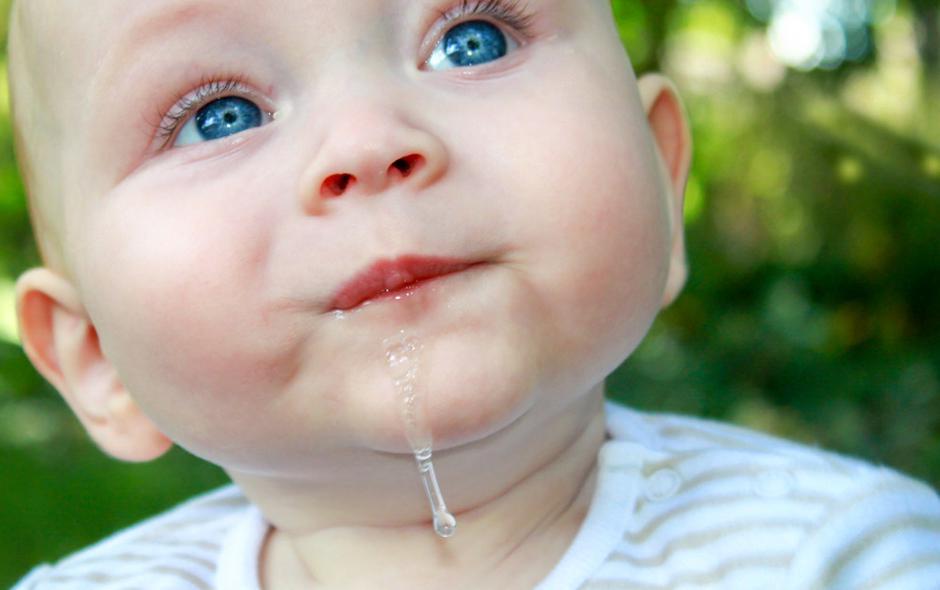
Wipe attack?!
The title of this blog is inspired by a routine I learned from the father of a very special kid that goes “Attaaaack… Of… The wipe!”. He used it to build anticipation and to prepare his son to get his mouth wiped whenever his drooling would get out of control. As comical as this sounds, my aim is to help families better understand why this happens and how to address it.
What is drooling and why do children drool?
Drooling is the unintentional loss of saliva from the mouth, and a common experience for very young children. All children, in fact, drool as part of their development—controlling saliva is a skill that must be learnt. Usually, this happens when a child develops head and upper body control during the first few years of life. In addition, children need to develop a certain degree of awareness of their oral structures; they must swallow frequently and effectively, and they must be able to seal their lips. It is known that teething may contribute to a temporary increase in drooling. However, excessive drooling or drooling beyond teething could also be a sign of a larger health problem that might affect children’s development, such as muscle tone and coordination issues. Excessive drooling is often caused by poor swallowing. This is frequently seen in children who have difficulties controlling their mouth and tongue.
Some conditions in which persistent drooling is commonly observed include:
- Hypotonia
- Hydrocephalus
- Genetic syndromes in which muscle tone and coordination are affected, like Down Syndrome
- Neurological impairments that affect children’s motor abilities, like Cerebral Palsy and Childhood Apraxia of Speech
A child’s diet, medications, oral/dental health, allergies and nasal obstructions could also contribute to an open mouth posture that promotes drooling in healthy older children.
Who can help?
Your primary care physician can help determine whether a larger health condition is causing excessive drooling. There are some surgical and medical options to manage drooling that are appropriate in some cases.
Some children will need an Occupational Therapist or Physical Therapist to help them develop their trunk and head control. These professionals frequently work on strengthening core muscles as well as advising on postural adaptations to promote better swallowing skills. A child’s habitual visual patterns might also play a role; some children with vision concerns may use eccentric viewing by tilting their head to better some objects around them. Saliva might pool in the front of a child’s mouth, making it harder for her to swallow when she is in certain positions. We also often see an increase in drooling whenever a child with developmental disabilities in engaged in a difficult task.
All Speech and Language Therapists (SLTs) have a deeper understanding of oral motor skills and the anatomy and physiology involved in swallowing. Additionally, SLTs may choose to specialize in motor speech development, feeding, and oral motor by pursuing trainings and certifications in PROMPT, TalkTools, Beckman and Orofacial Myology. These therapists usually work with children with neurological impairments—they are the professionals who will address drooling on a daily basis.
Why is Speech and Language Therapy recommended for children who drool?
What a Speech and Language who specializes in oral motor really does, when anything has to do with sensation and movement, is to identify – with precision – the sensorimotor status of children’s speech and/or saliva control and/or feeding and swallowing. Only then can we decide on which approach and techniques we will employ. If required, Specialist Speech and Language Therapists will work with your child on the concepts of open/close or dry/wet, to enhance their awareness and ability to close their mouth and dry their chin, respectively. Your Speech and Language Therapist will also prepare an Oral Motor and/or a Speech-Motor program tailored to your child’s needs. Finally, SLTs will employ evidence based behavioural techniques to help your child swallow more often and more effectively.
Sources:
Scully C, Limeres J, Gleeson M, Toma I & Diz P. (2009) Drooling. Journal of Oral Pathology, 38: 321–327
Arvedson J, Clark H, Lazarus C, Schooling T, & Frymark T. (2010) The effects of oral motor exercises on swallowing in children: an evidence based systematic review. Developmental Medicine and Child Neurology, 52:1000 1013
McInerney MS, Reddihough DS et al (2019) Behavioural interventions to treat drooling in children with neurodisability: a systematic review
Little SA, Kubba H, Hussain SS. An evidence-based approach to the child who drools saliva. Clin Otolaryngol 2009; 34: 236–9
Walshe M, Smith M, Pennington L. Interventions for drooling in children with cerebral palsy. Cochrane Database Syst Rev 2012; 11: CD008624
Valvano J. Activity-focused motor interventions for children with neurological conditions. Phys Occup Ther Pediatr 2004; 24: 79–107.
Hart T. Treatment definition in complex rehabilitation interventions. Neuropsychol Rehabil 2009; 19: 824–40





